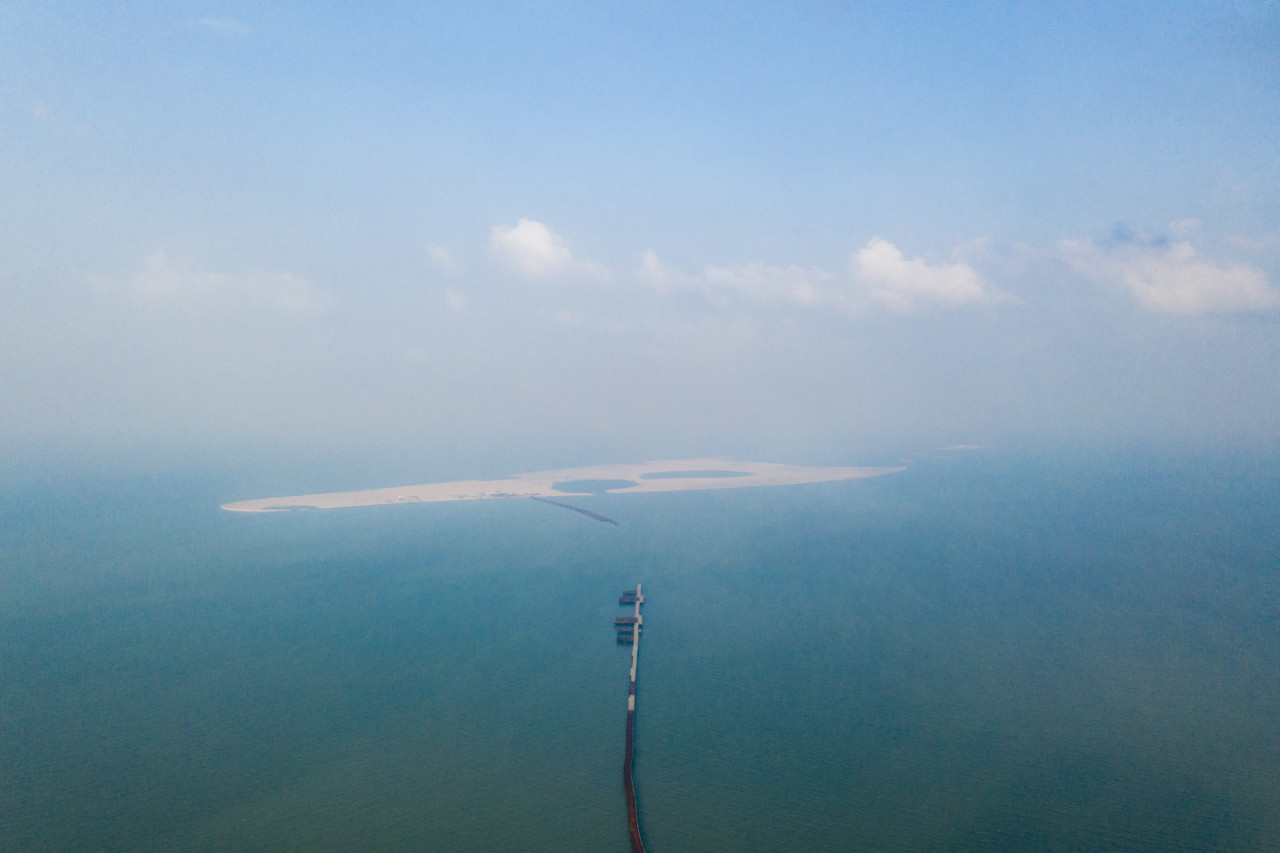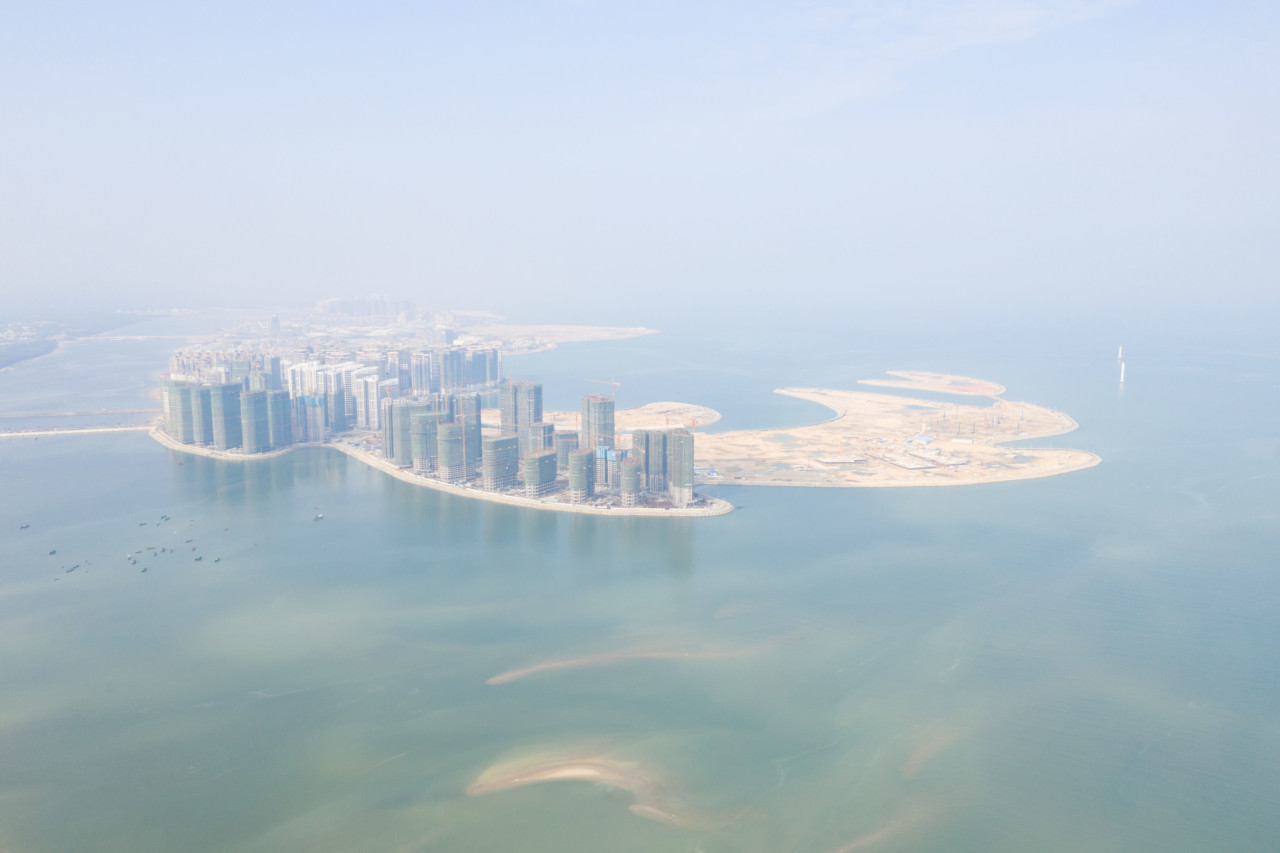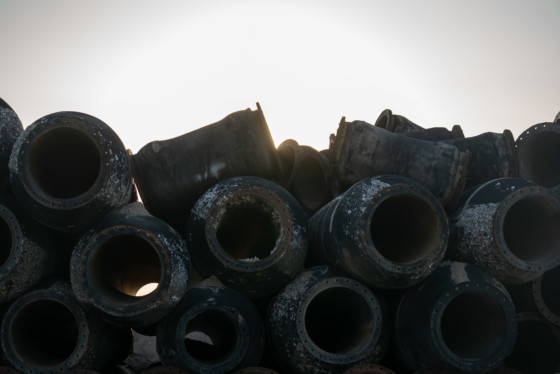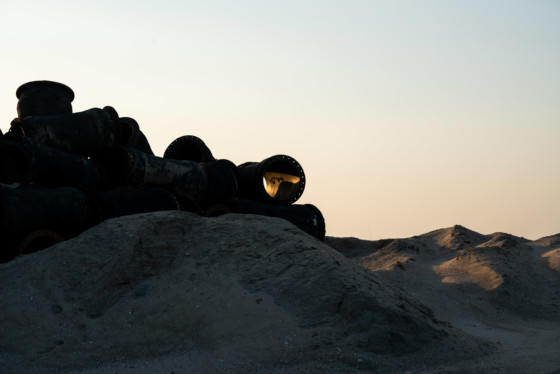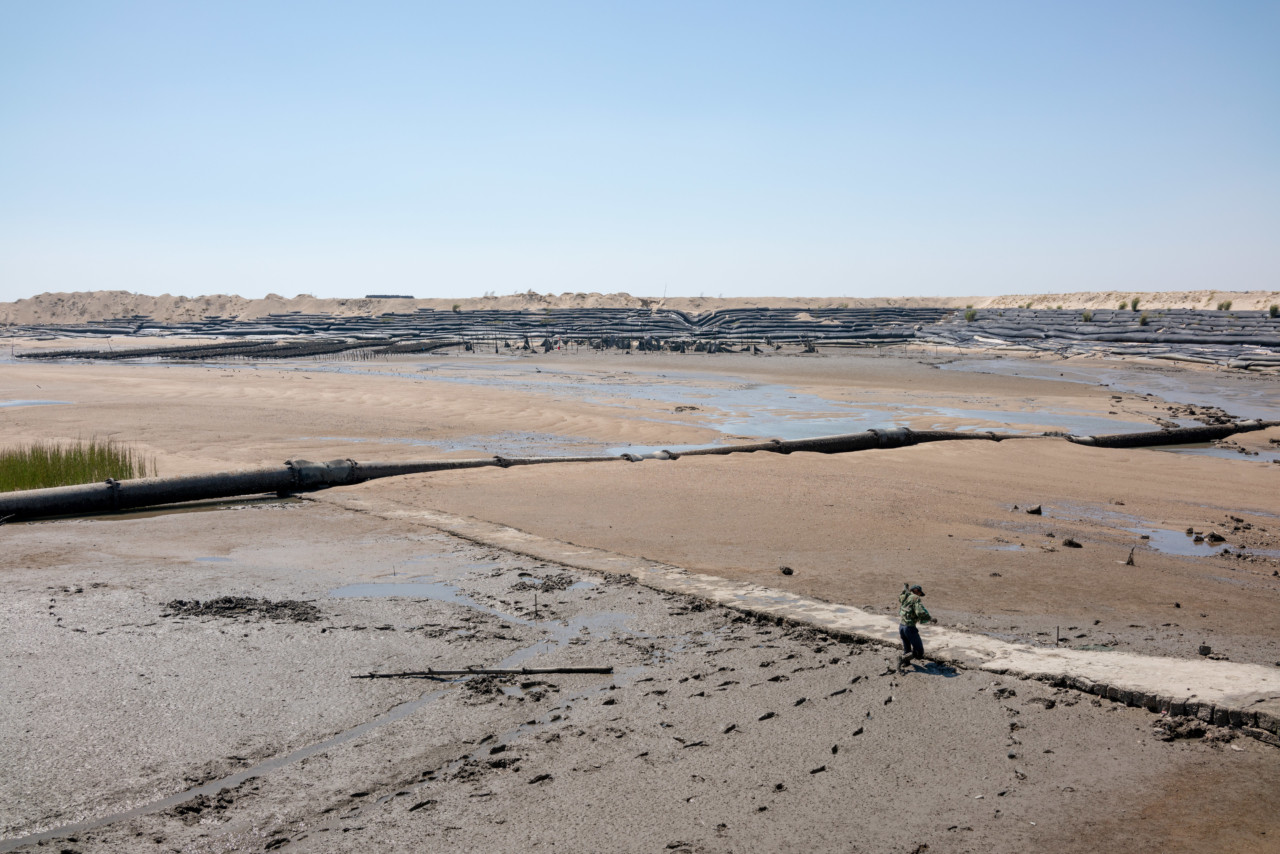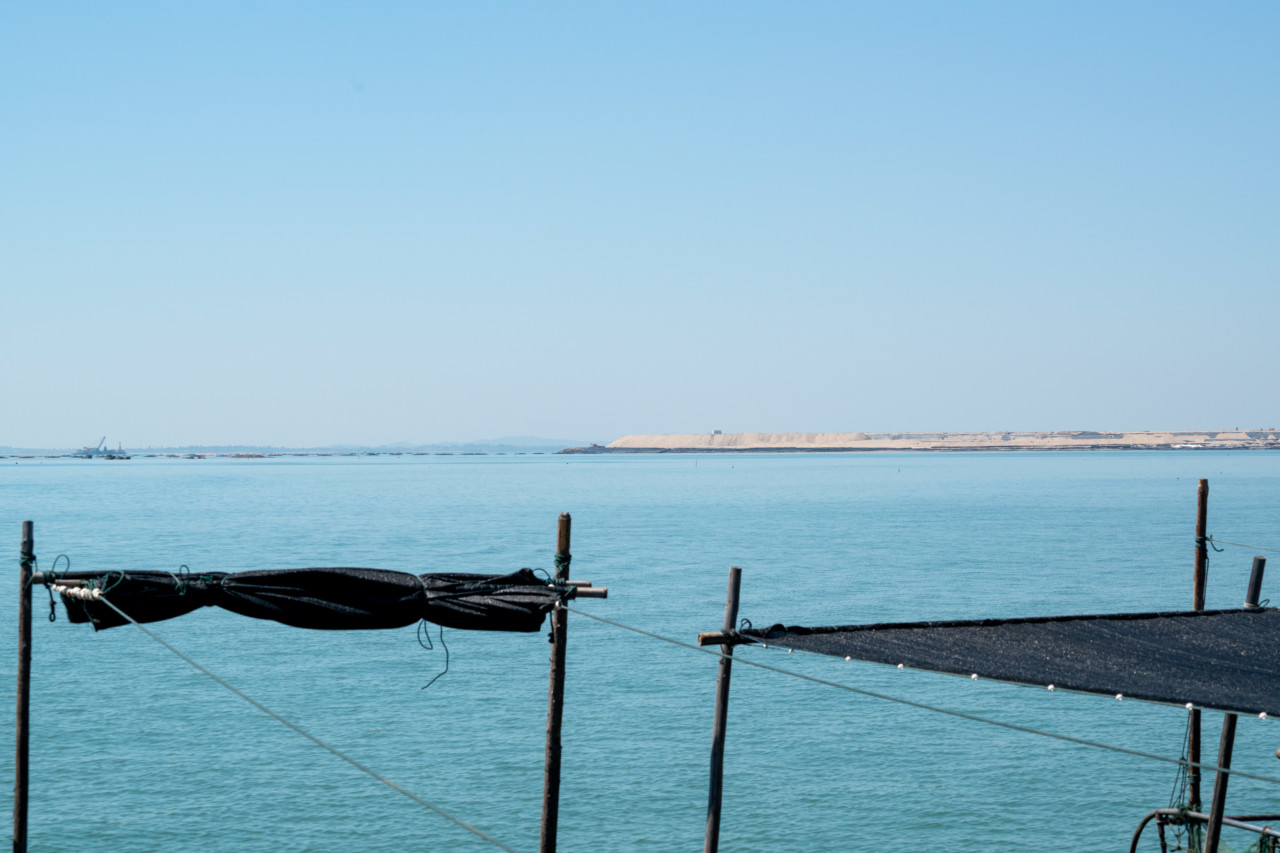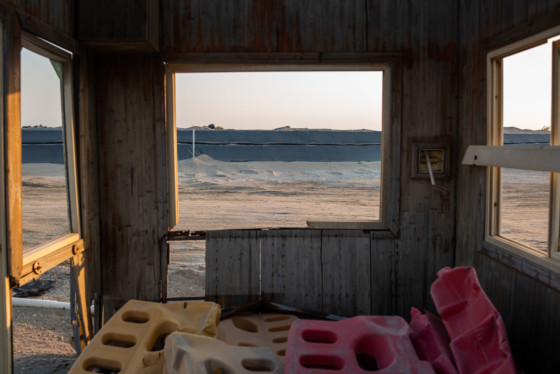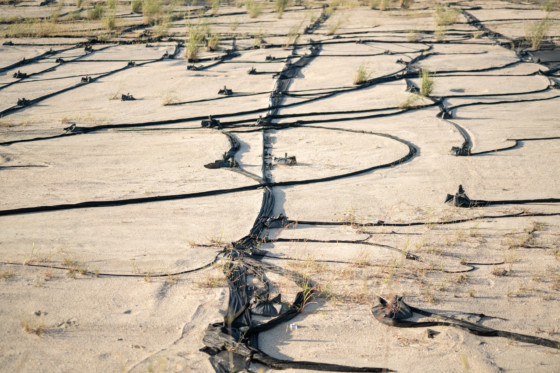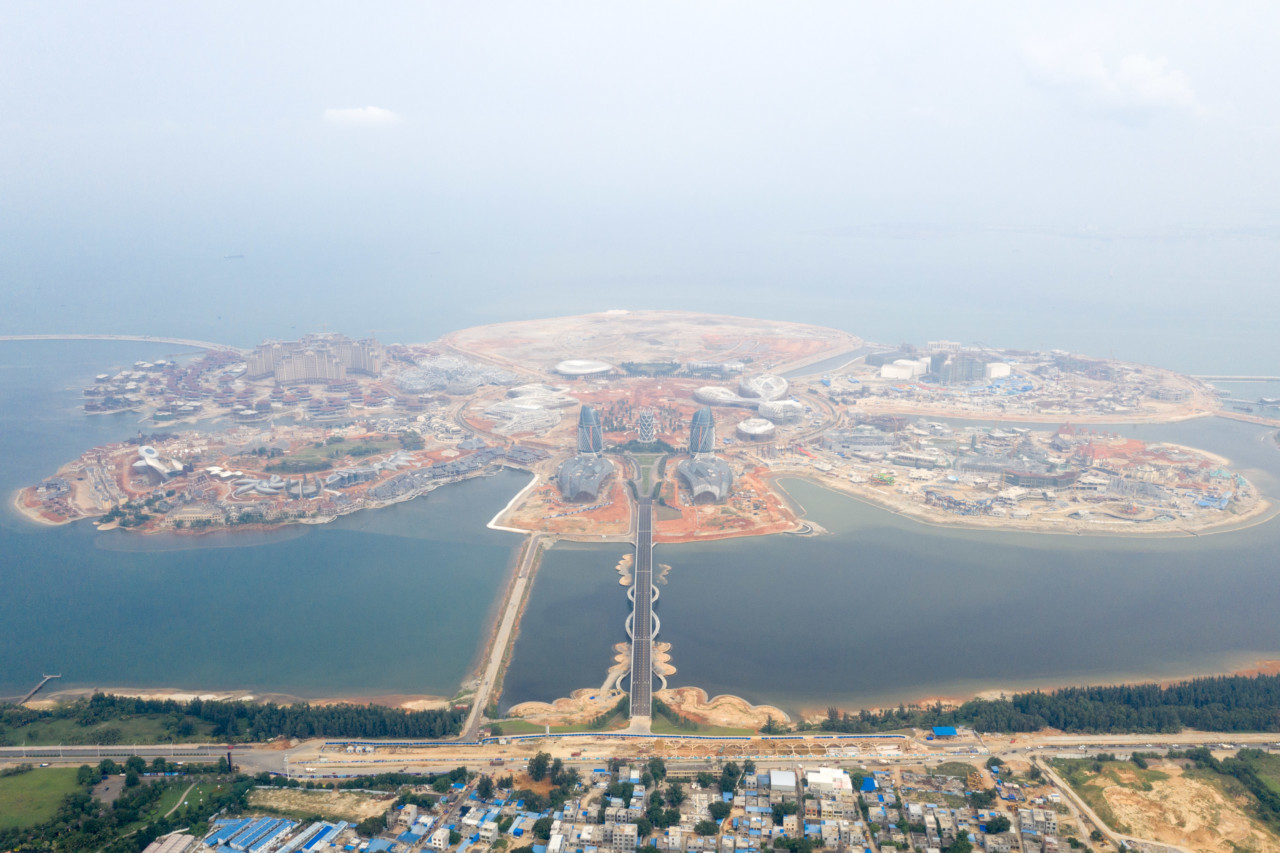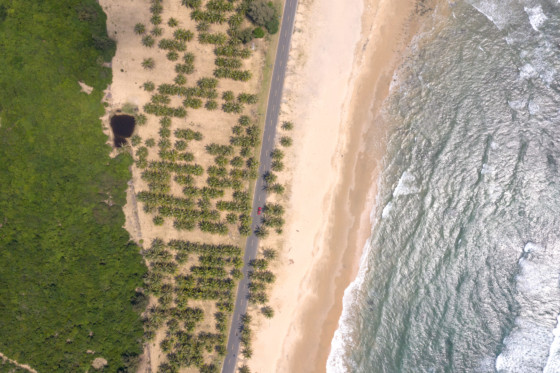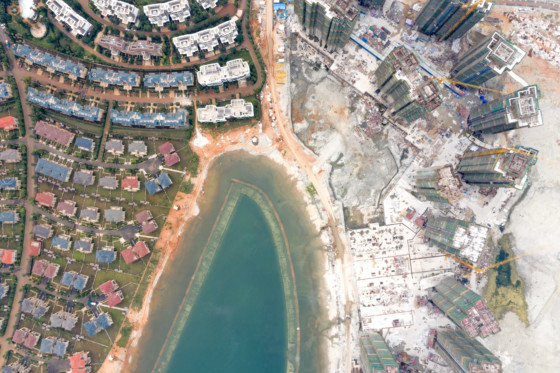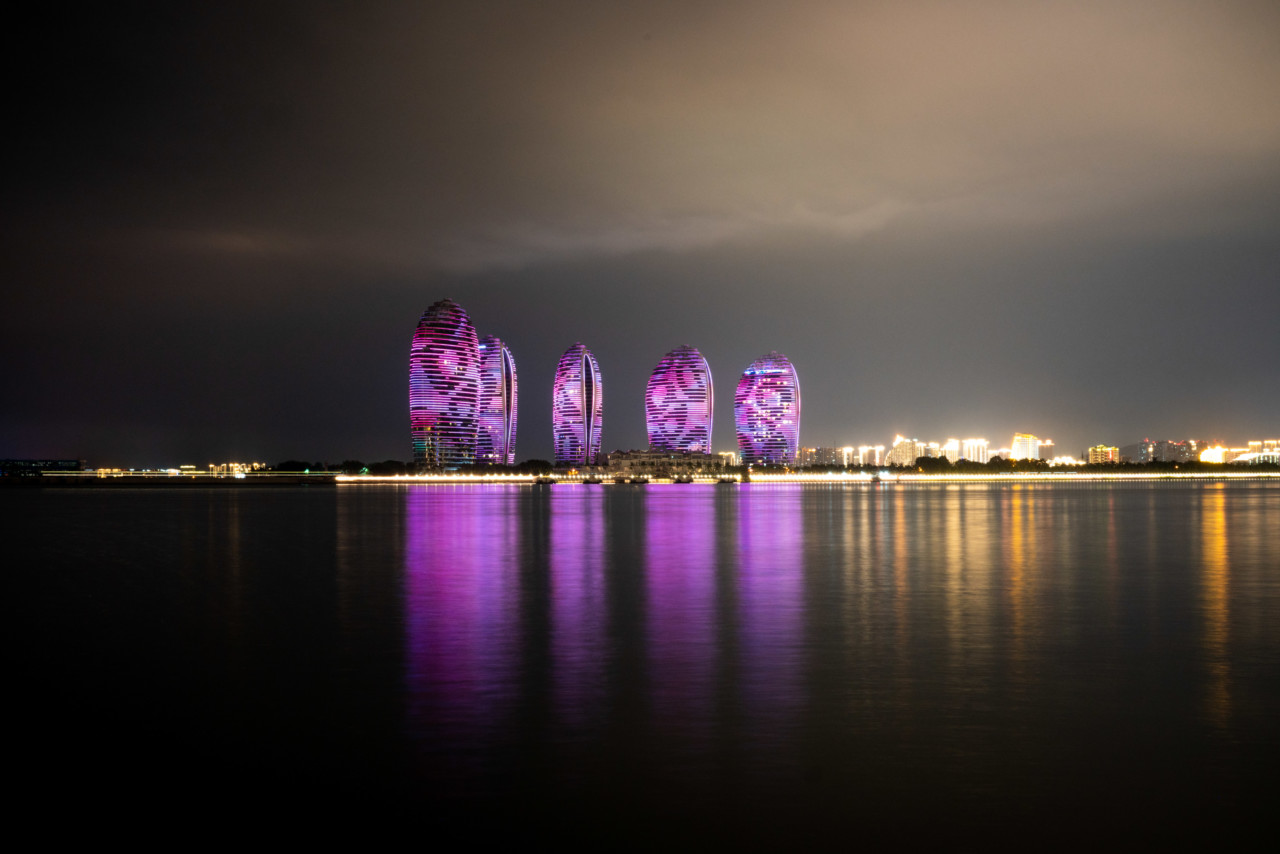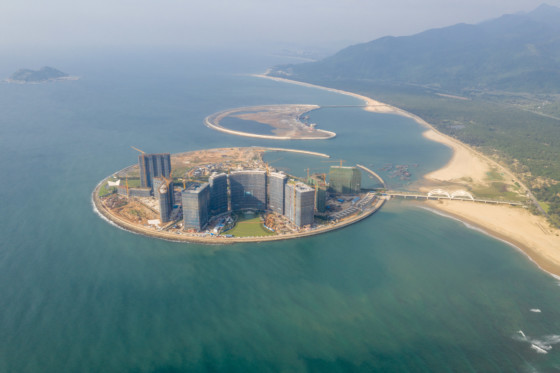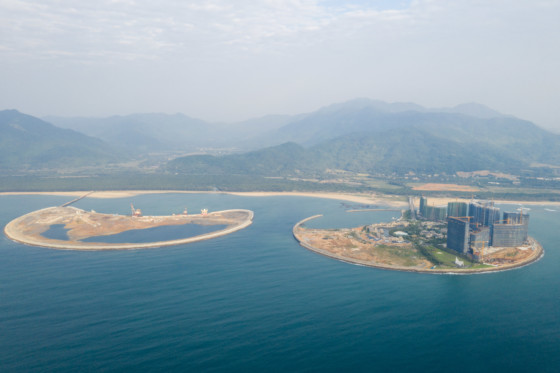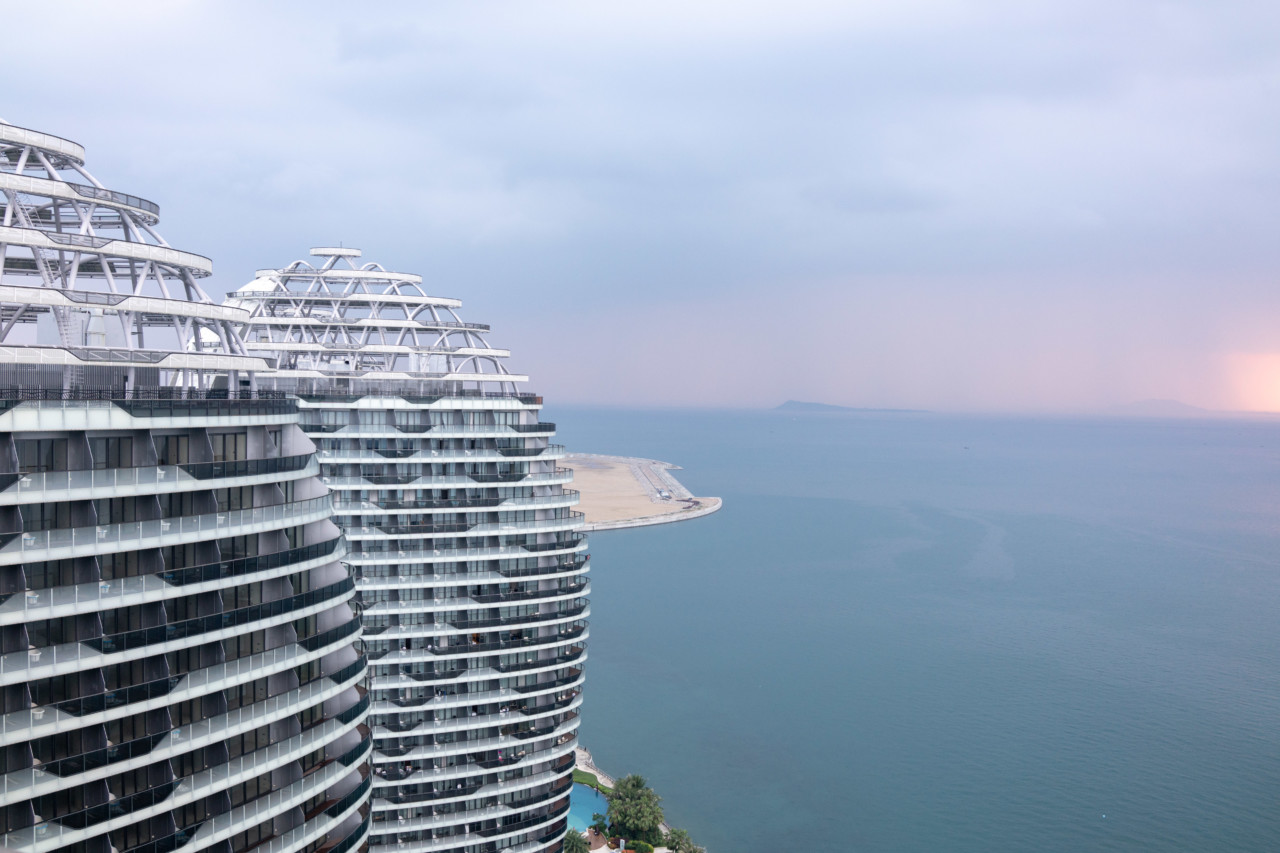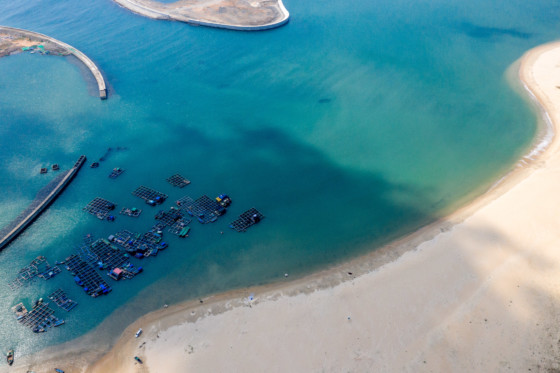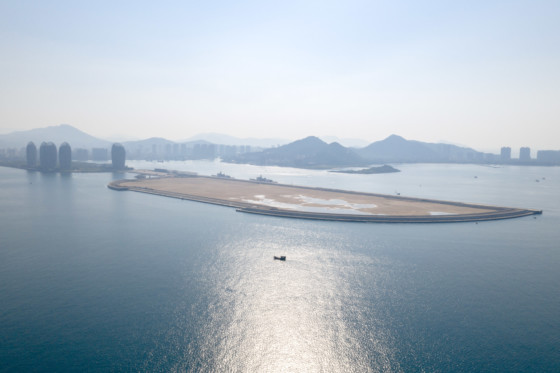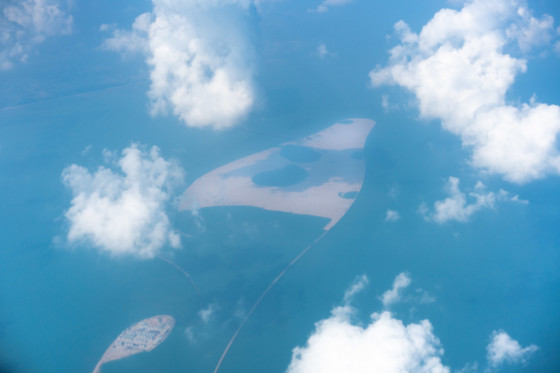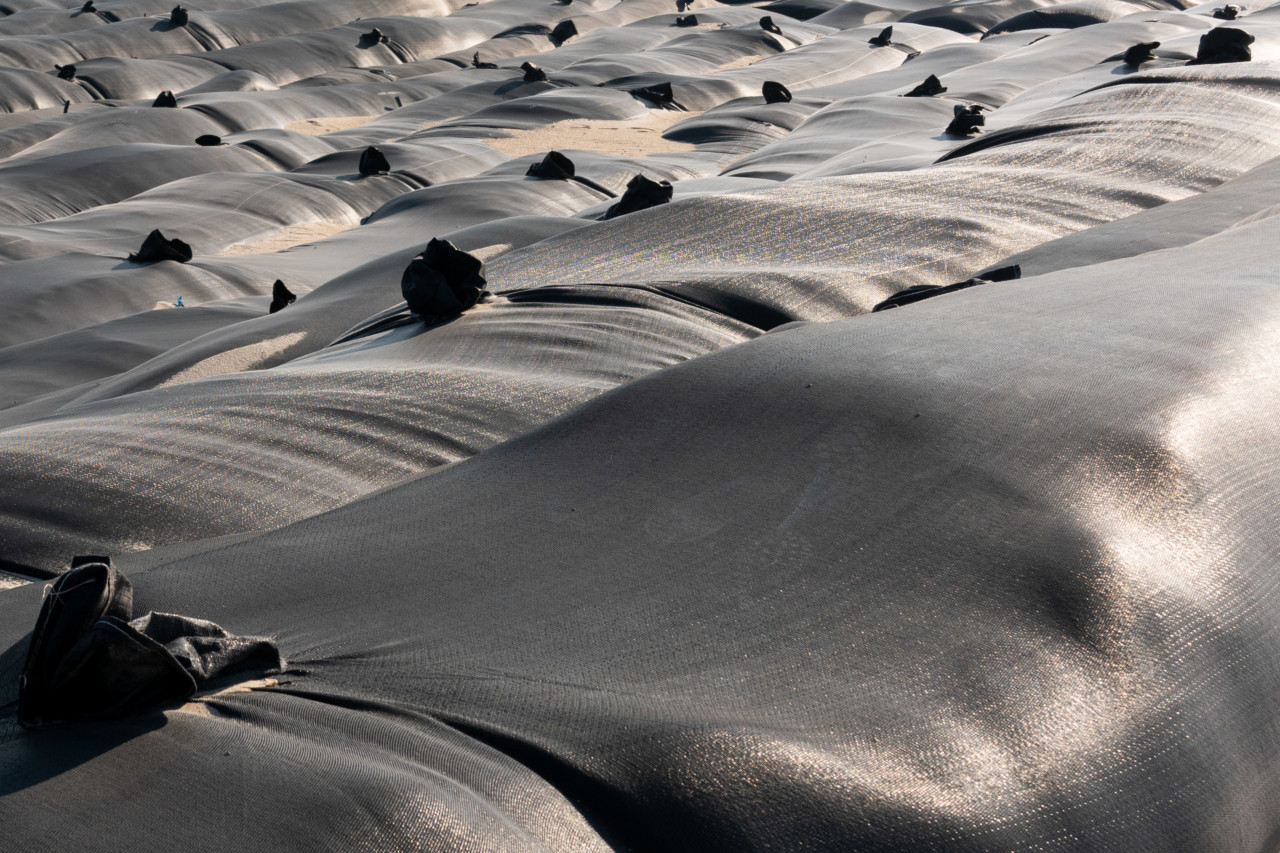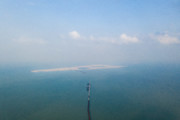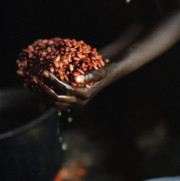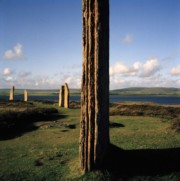A Mirage of Luxury Built on Sand
Sim Chi Yin's new work explores the booming international trade in sand, and its grave implications
Magnum nominee Sim Chi Yin’s ongoing project, Shifting Sands, examines the global hunger for sand, and the ill-regulated, under-documented industry it has fed. Here, Justinien Tribillon – urbanist, architectural writer and editor of The Migrant Journal – reflects upon the project’s latest chapter in China which was supported by the Pulitzer Center for Crisis Reporting
They emerge out of nowhere. Culturally, aesthetically, geologically, ecologically, architecturally. They possess no foundation and little fundament. Some of them stand unfinished, defeated by the whim of a politician or the tremor of global financial markets. For artificial islands don’t stand for anything but the perspective of quick economic profits and the mirage of luxury living.
Could it be that humanity’s pyrrhic relation to its natural resources is best summed up in that one phrase of “land reclamation”? The process describes the creation of new lands from water. Filled with large quantities of matter —cement, gravels and above all, sand— oceans, riverbeds, wetlands and lakes are “reclaimed” to become terra firma. Land that you can walk on, drive on, build on. And most importantly, land that you can sell. Land reclamation is the privatisation of the power a sovereign state has over its physical territory. From the top of a crane bearing the logo of a real estate company, it can now be expanded and its borders redrawn. It’s Christopher Columbus in a hard hat, driving home in the evening once the job is done.
With photography, Sim Chi Yin’s ongoing project “Shifting Sands” asks three fundamental questions. Who is “reclaiming” that land? From whom? And for whom? The Singapore-born photographer started her research on sand as commodity in 2017 and first looked at her home country’s addiction to land reclamation, and therefore to sand. The city-state has increased its surface area by 23 per cent since 1963 and according to the United Nations, Singapore —a country of 5 million inhabitants with a surface area the size of New York City— was in 2017 the world’s largest importer of sand.
The commodification of sand, a natural resource available in limited quantity, illustrates a near-caricatural relationship between the planet’s wealthiest and poorest communities. Those who sell it and those who buy. The exploitation of sand —legal and illegal— has generated social tensions and political unrest, it has nurtured corruption and also led to the rise of violent “sand mafias” in Malaysia, Cambodia, Vietnam, India, Indonesiabut also Italy, Tunisia, Morocco, Senegal. The ecological consequences of draining entire regions out of their sand reserves, then injecting that same sand mixed with gravel and rocks in other ecosystems has led to catastrophes on both sides.
"Alarmed by this Space Race of a new kind, the Chinese government cracked down on privately developed land reclamation projects in 2018"
- Justinien Tribillon
This new series of photographs shot by Sim in 2018 brings another dimension to her photographic research. She has transitioned from an “infrastructural” gaze to an architectural and aesthetic critique of land reclamation. Often shot from the ground or from a boat, her previous pictures of Singapore and Vietnam, taken in 2017, captured fenced-off stockpiles of sand, sailing barges, and caissons of concrete dispersed in the sea. It also showed the communities’ livelihoods destroyed by this commerce, their homes and local economies shattered by erosion. Together, these pictures illustrated the complex ramifications of sands exploitation across space, from one side of the Gulf of Thailand to the other.
In this new series, Sim takes us on an architectural bird’s eye view-exploration of the “Dubais of China”, concentrated in the island province of Hainan. Designed as tourist destinations or luxury havens, with theme parks and hotels, they are some of China’s numerous ongoing private land reclamation projects. Many of these projects involve international or Western companies – from architectural firms to landscape design companies, and even theme park providers.
The necessity of “reclaiming” land might not appear so urgent for one of the biggest countries in the world: indeed it isn’t. Such developments are in large part business opportunities.
Chinese news reports claim reclaimed land costs roughly $310,000 to $670,000 (USD) per hectare. If you compare this cost to the average cost of purchasing land, especially for commercial/residential purposes, in a big city, it’s in some locations at least 10 times more expensive to buy land than it is to reclaim. And under a political regime where urban land is formally owned by the state, the capacity for capitalistic economic stakeholders to “reclaim” land from the sea has to be both transgressive and terribly exciting. Such projects are also – at times – the result of a developmentalist view – one of creating ready-made land afresh, rather than existing clearing existing lands.
Alarmed by this Space Race of a new kind, the Chinese government cracked down on privately developed land reclamation projects in 2018, officially concerned by such projects’ ecological impacts.
"There is also a sense of irony in this new series of images for “Shifting Sands”. With her shots taken from the sky, Sim appeals to the aesthetics and spatial fictions that real estate developers and their customers cherish"
- Justinien Tribillon
There is also a sense of irony in this new series of images for “Shifting Sands”. With her shots taken from the sky, Sim appeals to the aesthetics and spatial fictions that real estate developers and their customers cherish. We are reminded of promotional videos and architectural renderings like those analyzed by Keller Easterling in the book Extrastatecraft: the camera zooms in from outer space on cities that only exist in their financial backers’ imagination, as a low-pitched male voice explains how this city-to-be in the middle of the desert will be directly connected to the planet’s key financial hubs. But Sim Chi Yin is a photographer, not a render artist. The pictures she shares are of unfinished projects, crescent moon and sun-shaped islands left incomplete. Like a game of SimCity on pause.
Her shots of the Phoenix Island best illustrate the foolishness of these projects’ relationship to economic development and the exploitation of natural resources. The luxury flats developed on a “reclaimed” island stand proudly in the foreground. Their soulless and placeless design likely inspired by the sails of ships on the sea, like virtually all luxury resorts built by the sea or rivers built in the last fifteen years, from Dubai to London, Singapore to Miami. In the background sits empty the second phase of the Island’s extension. It was temporarily halted by the Chinese authorities when it became clear it had created a 2-km erosion of the Sanya bay.
"The social, economic, and political issues generated by the commercial exploitation of sands remain little known and relatively underreported in the media"
- Justinien Tribillon
From a technique employed in specific situations of extreme pressure on land availability, saved almost exclusively for major infrastructure projects —such as a new airport or a container port in a densely populated city— “reclamation” projects have become a vehicle for quick profit: a simplistic approach to architecture, urban development and territorial agency. Sand-fuelled greed.
The social, economic, and political issues generated by the commercial exploitation of sands remain little known and relatively underreported in the media. Yet, their ramifications are typical of our era where complex issues are simplified for immediate gains whilst their consequences are overlooked —until the ground beneath our feed literally disappears from erosion. From Vietnam to Singapore, China to Taiwan, Sim Chi Yin explores the many facets of these shifting sands. She offers multiple points of view, locations, and techniques in order to capture the complexity of what is at stake, right here and right now.
Additional reporting by Cong Yan


